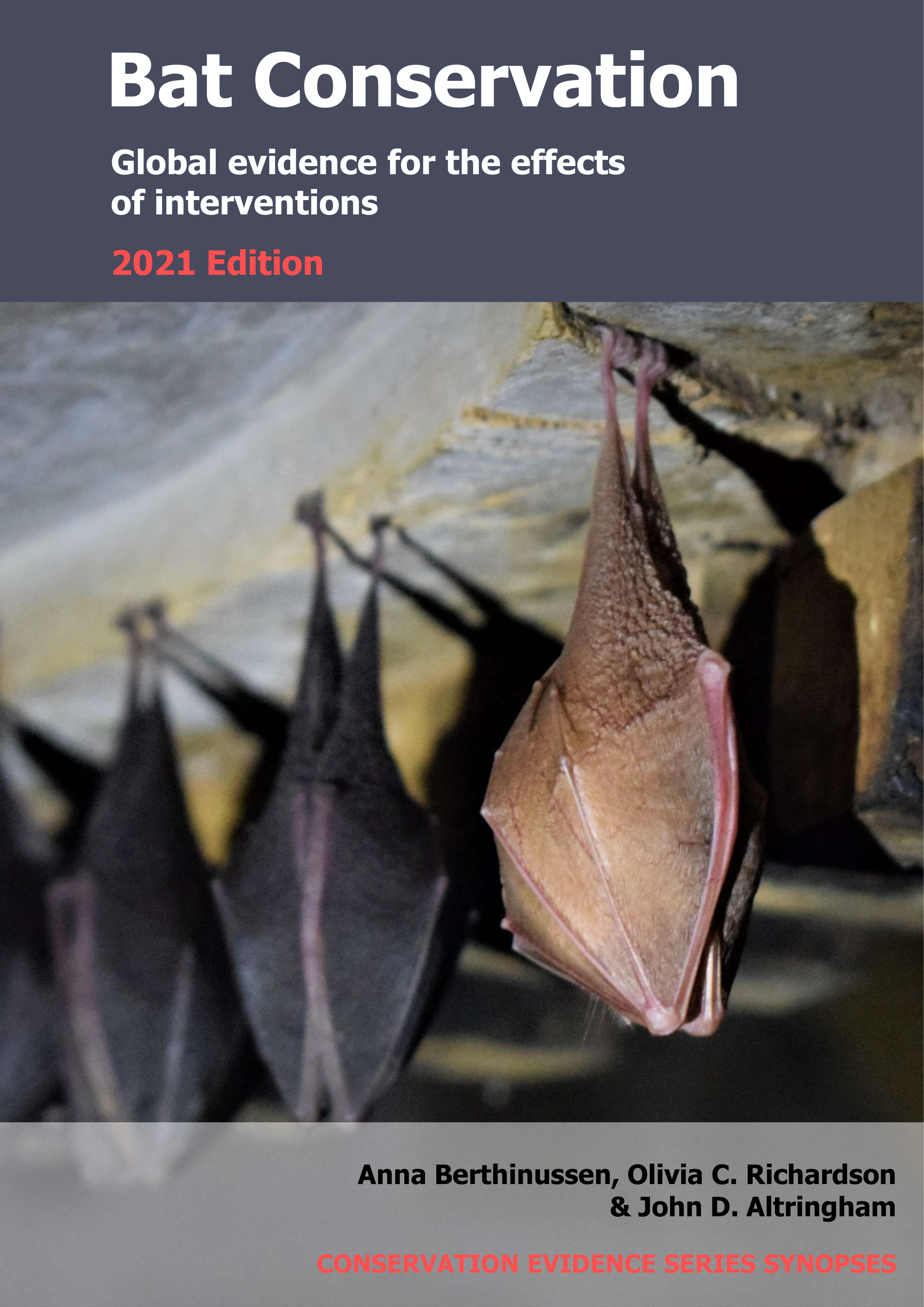Maintain bat roosts in road/railway bridges and culverts
-
Overall effectiveness category Likely to be beneficial
-
Number of studies: 2
View assessment score
Hide assessment score
How is the evidence assessed?
-
Effectiveness
70% -
Certainty
45% -
Harms
0%
Study locations
Supporting evidence from individual studies
A before-and-after study in 1988–2005 of a road bridge over a river in northwest Ireland (Marnell & Presetnik 2010) found that after crevices were retained during strengthening work and repairs to the bridge, a Daubenton’s bat Myotis daubentonii maternity colony continued to roost in the bridge in similar numbers as before the work. A maternity colony of approximately 25 Daubenton’s bats was first recorded roosting in the bridge in 1988 (no more recent data provided). After the repair work was complete, four bats were recorded in the original roost crevice in 2004, and 25 bats were recorded in 2005. Strengthening works (including laying cement, pointing, and grouting) were carried out on the five-arch masonry bridge in September–October 2003. Roosting crevices were marked and temporarily filled with polystyrene to prevent them from being filled. Bats were counted in the bridge in July 2004 and 2005.
Study and other actions testedA review in 2017–2018 of case studies at five road bridges in California, USA (Harvey & Associates 2019) found that when bat roosts were maintained during bridge replacement works, Yuma myotis bats Myotis yumanensis recolonised two of three roosts and Mexican free-tailed bats Tadarida brasiliensis recolonised three of four roosts in similar numbers to before the works, but pallid bats Antrozous pallidus did not return to either of two roosts. Yuma myotis bats recolonised two roosts in similar numbers to before the works (before: 220, 100; after: 220, 100), whereas numbers declined at a third roost (before: 40; after: 20). Mexican free-tailed bats recolonised three roosts in similar numbers to before the works (before: 200, 3,000, 994; after: 200, 3,000, 1,010), whereas numbers declined at a fourth roost (before: 2,000; after: 600). Pallid bats did not return to either of two roosts used by 18–20 bats. At all of five sites, the original bat roost structures (abutments: one site; hinges and expansion joints: four sites) were retained during bridge replacement works (dates not reported; see original report for details). Bats were temporarily excluded from roosts in hinges and expansion joints. Counts of bats before and after the works were taken from questionnaires completed by the California Department of Transportation. Field surveys (including daytime inspections, colony and emergence counts) were conducted by the authors in spring and summer 2017 and 2018 after bridge works were complete.
Study and other actions tested
Where has this evidence come from?
List of journals searched by synopsis
All the journals searched for all synopses
This Action forms part of the Action Synopsis:
Bat Conservation
Bat Conservation - Published 2021
Update 2020





)_2023.JPG)














